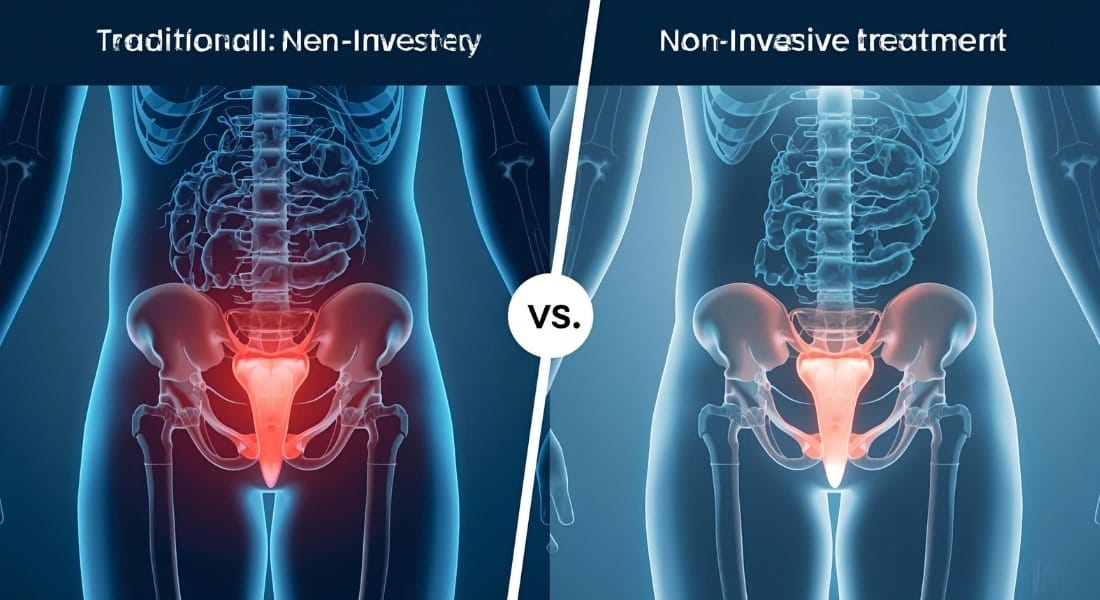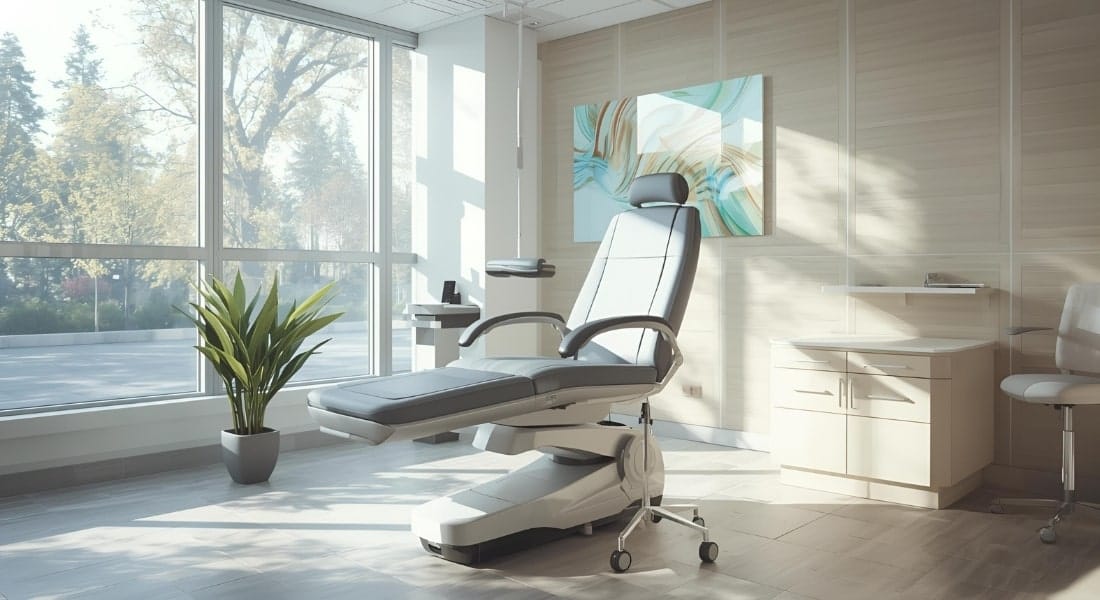In the realm of women’s health, pelvic floor health has emerged as a critical and often under-addressed area of patient care. The pelvic floor, a complex network of muscles, ligaments, and connective tissues, plays a vital role in urinary and bowel continence, sexual function, and core stability. However, due to life events such as pregnancy, childbirth, aging, and hormonal changes, this crucial musculature can weaken, leading to a range of debilitating conditions. Traditionally, patients faced limited and often inconvenient treatment options, leading to low compliance and suboptimal outcomes. The demand for effective, non-invasive solutions has never been greater. For healthcare providers, hospitals, and wellness centers, the advent of innovative technology for non-invasive pelvic floor strengthening represents a significant opportunity to transform patient care, enhance clinical offerings, and address a vast, underserved market.
This guide explores the rise of modern non-invasive pelvic floor strengthening solutions, delving into the science, clinical applications, and compelling business case for incorporating advanced technology like the FeMIChair. Aakaar Medical Technologies Ltd is at the forefront of this evolution, providing cutting-edge solutions that empower practitioners to offer a gold-standard of care for pelvic floor dysfunction.
Understanding Pelvic Floor Dysfunction
Pelvic floor dysfunction (PFD) is a broad term for a group of disorders caused by weakness, tightness, or a hypertonic state of the pelvic floor muscles. It is a widespread condition, with studies indicating that up to one-third of women experience at least one form of PFD in their lifetime. Despite its prevalence, it remains a silent epidemic, with many patients hesitant to discuss their symptoms and professionals lacking effective, non-invasive treatments to offer.
Common Conditions Arising from PFD
- Urinary Incontinence: This is arguably the most common symptom of PFD. Stress urinary incontinence (SUI), caused by pressure on the bladder from activities like coughing, sneezing, or exercising, and urge urinary incontinence (UUI), characterized by a sudden, intense urge to urinate, significantly impact a patient’s quality of life.
- Pelvic Organ Prolapse (POP): When the pelvic floor muscles are unable to support the pelvic organs (bladder, uterus, rectum), these organs can descend and bulge into the vagina, causing a feeling of pressure or a bulge.
- Postpartum Issues: Childbirth is a major cause of pelvic floor muscle damage, leading to incontinence, sexual dysfunction, and chronic pain. Effective postpartum pelvic floor recovery is essential for a woman’s long-term health.
- Sexual Health Concerns: PFD can lead to pain during intercourse, reduced sensation, and difficulty achieving orgasm.
- Chronic Pelvic Pain: Tightness and spasm in the pelvic floor muscles can contribute to chronic pain in the lower back, hips, and pelvic region.
The physical and psychological impact of PFD on patients is profound, leading to social isolation, anxiety, and a diminished quality of life. For healthcare systems, the burden is immense, with significant costs associated with managing incontinence products, surgeries, and chronic pain treatments. The need for a simple, effective, and accessible solution is a major driver for innovation in this field.
Traditional vs. Non-Invasive Treatments
Historically, the management of pelvic floor dysfunction has relied on a few key methods, each with notable limitations.

- Kegel Exercises: Kegels, which involve manually contracting and relaxing the pelvic floor muscles, are the first-line treatment recommended by many healthcare providers. However, their effectiveness is heavily dependent on patient compliance and the ability to perform the exercises correctly. Many patients struggle to identify the correct muscles, and the repetitive, manual nature of the exercises often leads to low adherence.
- Physiotherapy: Specialized pelvic floor physiotherapy offers a more guided approach. A physiotherapist can use biofeedback and other techniques to help a patient isolate and strengthen the muscles. While effective, this is often a time-consuming and expensive process, requiring multiple appointments and long-term commitment. For practices, it requires specialized personnel and is not scalable.
- Surgery: For severe cases of incontinence or prolapse, surgical intervention may be necessary. However, surgery is invasive, comes with risks of complications, requires significant downtime, and is often a last resort for patients.
The limitations of these conventional methods highlight a clear gap in the market for a solution that combines the effectiveness of professional guidance with the convenience and scalability of modern technology. The emergence of devices for non-surgical pelvic floor therapy is a direct response to this need.
What is FeMIChair?
The FeMIChair is a revolutionary, non-invasive medical device that utilizes high-intensity focused electromagnetic (HIFEM) technology to stimulate the pelvic floor muscles. It represents a paradigm shift in the treatment of pelvic floor dysfunction, offering a painless and highly effective solution without the need for surgery, manual exercises, or downtime.
The Technology Explained
FeMIChair operates by delivering thousands of supramaximal contractions to the pelvic floor muscles in a single session. Unlike a manual Kegel, which can only be held for a few seconds, the electromagnetic energy penetrates the muscles at a much higher intensity, causing them to contract at a rate and intensity that is impossible to achieve voluntarily.
- How it works: The patient simply sits on the ergonomically designed chair, fully clothed. The chair’s applicator delivers the electromagnetic stimulation directly to the pelvic floor muscles.
- Treatment Protocol: A standard treatment course typically involves six to eight 28-minute sessions, scheduled twice a week. The contractions are strong but painless, and patients can feel the muscles working without any discomfort.
- Safety & Compliance: The technology has garnered FDA/CE approvals and is backed by a robust body of clinical research. Its non-invasive nature means there is no risk of infection, and the ease of use dramatically increases patient compliance.
The FeMIChair is a game-changer for practices seeking a reliable non-surgical pelvic floor therapy that can be easily integrated into their workflow. The fact that the patient remains fully clothed and requires no special preparation makes it a highly convenient option for both the patient and the clinic.
Clinical Benefits of FeMIChair
The clinical efficacy of the FeMIChair is well-documented and offers compelling evidence for its role as a leading electromagnetic pelvic floor treatment.
- Urinary Incontinence: Numerous studies have shown a significant reduction in urinary leakage and the number of incontinence pad usage after a course of treatment. The device strengthens the supportive musculature around the bladder and urethra, improving both stress and urge incontinence.
- Postpartum Pelvic Floor Recovery: The device is highly effective in helping new mothers regain pelvic floor strength and function after childbirth, addressing common issues like incontinence and pelvic instability. For mothers struggling with postpartum pelvic floor recovery, it provides a much-needed non-invasive and efficient solution.
- Sexual Wellness: By strengthening the pelvic floor and increasing blood flow to the area, the FeMIChair can improve sensation and sexual function, addressing a critical component of women’s overall health and well-being.
- Patient Satisfaction and Compliance: The ease of the treatment and the rapid, noticeable results lead to exceptionally high patient satisfaction rates. Since there is no physical effort required from the patient, compliance with the full treatment protocol is far greater than with manual exercises.
This technology provides a new level of care for pelvic floor dysfunction solutions, offering a comprehensive approach that improves multiple facets of a patient’s life simultaneously.
B2B Value Proposition for Clinics & Hospitals
For healthcare institutions, investing in the FeMIChair is not just about patient care; it’s a smart business decision with a clear return on investment.

Revenue Opportunities
The high demand for non-invasive pelvic floor strengthening combined with the short treatment time per session allows clinics to serve a high volume of patients. The device can generate significant revenue from a series of paid treatments, with a compelling ROI that far surpasses many other aesthetic or wellness devices.
Competitive Advantage
By offering a device that is at the forefront of women’s health innovation technology, a clinic can differentiate itself in a competitive market. The FeMIChair positions a practice as a leader in advanced, non-surgical pelvic care, attracting new patients and strengthening its brand reputation.
Patient Acquisition and Retention
The device’s viral-worthy results and high patient satisfaction create powerful word-of-mouth referrals. Happy patients become loyal clients who are more likely to return for other services. The FeMIChair can serve as a key patient acquisition tool, drawing in a new demographic seeking effective B2B pelvic care solutions.
Integration into Existing Services
The device fits seamlessly into various clinical settings, including gynecology practices, urology clinics, wellness centers, and physiotherapy practices. It can be a standalone service or a complementary treatment to other modalities, such as sexual wellness protocols or core strengthening programs. For a physiotherapy equipment for pelvic floor, the FeMIChair offers a highly advanced alternative to traditional methods, enhancing the scope of services.
Why Partner with Aakaar Medical Technologies Ltd?
Aakaar Medical Technologies Ltd is more than just a distributor; we are a strategic partner committed to advancing healthcare in India. Our expertise in sourcing and delivering world-class medical innovations is unmatched.
A Trusted Provider
Our reputation is built on a foundation of reliability, quality, and ethical business practices. We carefully select products that are clinically proven, safe, and effective, ensuring that our clients can offer their patients the very best. The FeMIChair is a testament to this commitment, representing the gold standard in non-invasive pelvic floor therapy devices.
Comprehensive Training and Support
We understand that integrating new technology requires support. Aakaar provides comprehensive training to ensure that your staff is fully equipped to operate the FeMIChair safely and effectively. We also offer ongoing technical support and maintenance to ensure your investment operates flawlessly for years to come.
Leadership in Women’s Health Solutions
By providing devices like the FeMIChair, we are not just selling a product; we are leading a revolution in women’s health. We empower clinics to address the silent epidemic of pelvic floor dysfunction with dignity, efficacy, and innovation. We are committed to being the go-to provider for women’s health innovation technology, helping our partners offer life-changing results.
For clinics and hospitals seeking to expand their services, improve patient outcomes, and secure a strong ROI, the FeMIChair from Aakaar Medical Technologies Ltd is an unmissable opportunity.
FeMIChair: The Future of Pelvic Care and Clinical Success.

The non-invasive pelvic floor strengthening market is poised for explosive growth, driven by a patient population actively seeking better solutions. The FeMIChair stands at the forefront of this revolution, offering a safe, effective, and non-surgical treatment that is transforming the lives of countless patients. For clinics and healthcare providers, it represents an unparalleled opportunity to offer a gold-standard of care, attract new clientele, and solidify their position as leaders in women’s health. By partnering with Aakaar Medical Technologies Ltd, you gain access to not just a cutting-edge device, but also the support and expertise needed to make your new venture a resounding success.

